I’d estimate that about 90% of my on-the-air time lately is spent in the field. Indeed, since the first day I was licensed back in 1997, I’ve looked for any and every excuse to play radio…outdoors.
These days, activities like Summits On The Air, Parks On The Air, Islands On The Air, and World Wide Flora and Fauna provide the perfect excuse to grab a field radio kit and enjoy our great outdoors.
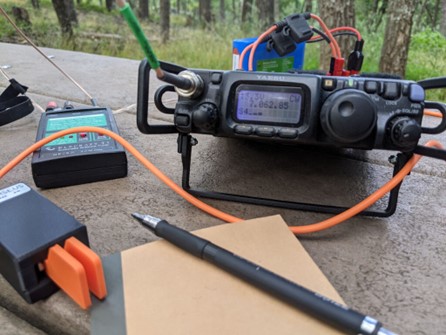
Yaesu FT-817 and Elecraft T1 ATU Antenna Tuner at North Carolina’s Pilot Mountain State Park
A lot goes into choosing the components of a field radio kit, and no doubt, one of the most important components is the antenna. I’m often asked by folks who are new to field operating, “What’s the best field antenna selection I can make?” While it’s a simple enough question, it requires a complex answer, because as with many things, it depends.
Still, the question deserves some attention. So let’s take a look at some of the types of antennas most commonly used in the field and discuss their pros and cons. In Part One of this series we’ll discuss resonant antennas. In Part Two we’ll look at a few non-resonant antenna options, and in the third we’ll talk about antenna tuners and consider whether they’re even a necessary component of your field kit.
First, though, let’s talk about one factor that may eliminate some choices up front.
Antenna Support
I do a lot of activations in the Appalachian Mountains near where I live, and with few exceptions, every park I visit–and most summits as well—have trees. Big, beautiful trees make great antenna supports, and all of the parks that I regularly activate have no prohibition on using trees as wire antenna supports so long as you remove them, along with all your gear, and cause the tree no harm. And because our enjoyment of the great outdoors relies on all of us taking care of our environment, I always remove the wire and leave the tree just as I found it.
However, if you do live in an area where trees aren’t plentiful (looking at you, Plains states, deserts, oceanfronts, and Rocky Mountains), you will need to bring either a self-supporting antenna or a portable telescoping mast. If you’re in a place where any sort of artificial protrusion may disturb the environment or other folks’ enjoyment of it–such as an urban park, wildlife refuge, or historic or archeological site–you will need a low-profile, low-impact antenna support option, as well as your own good sense and discretion about how (and whether) to use it.
Here are a few styles of antenna supports I see most often in the field:
- A telescoping fiberglass or carbon fiber mast that is guyed for support
- A drive-on mast support
- A clamp support that attaches to a picnic table or another solid structure like a truck
- Self-supporting antennas that use a ground spike mount
- Tripod mounts
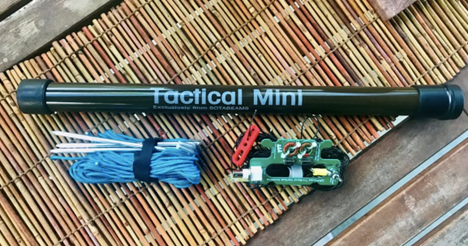
SOTAbeams’ Tactical Mini Compact Fiberglass Ultra-Portable Telescopic Mast
The type of support you use can have an impact on the types of antennas you take to the field. Self-supporting antennas tend to be more compact since most telescoping masts don’t usually exceed 33-35 feet of usable height. If you’re trying to deploy a longwire antenna on a mast that is short, it will have an impact on the antenna’s propagation pattern…although if you’re looking for NVIS contacts, this might actually be a bonus.
If you operate in a wide variety of field environments, then you may want to take a page from my book and include a few antenna support options in your field kit antenna arsenal.
QRP or QRO?
Another important factor to consider when choosing a field antenna is how much power it’s rated to handle. Typically there are two power ratings: one for SSB and another for CW and digital modes. Many antennas rated for 100 watts are actually rated for 100 watts SSB and 50 watts CW, maybe less for digital modes.
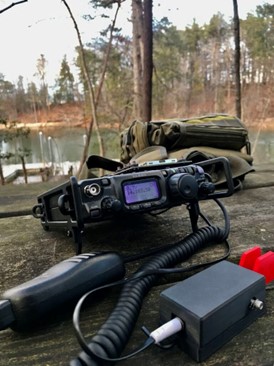
Yaesu FT-817ND QRP Transceiver
Antennas rated for higher power obviously tend to be heavier and bulkier than those rated for QRP or low-power operating. If, like me, you rarely exceed 10 or 15 watts of output power, almost any antenna design you encounter will work.
To begin our three-part series about choosing the right field antenna, let’s discuss one I often recommend to new field operators.
Resonant HF Antennas
In simple field operator terms, I consider a “resonant” antenna any antenna that natively works on one or more amateur radio bands with an acceptable SWR.
Some antennas, by design and without any modification, will work on multiple bands–typically harmonics, such as 40, 20, and 10 meters. The incredibly popular 40-meter end-fed half-wave antenna is a prime example.
Other antennas may have “links” that allow you to physically change the antenna resonance points by connecting or disconnecting parts of the antenna. The popular linked dipole is a brilliant example, but many end-fed antennas can be effectively linked as well.
Some antennas include a tuning mechanism. I personally consider these to be resonant antennas because no external impedance matching is needed. Some examples include magnetic loop antennas with variable capacitor tuning and vertical antennas with coils that can be tapped at fixed resonant points.
Let’s take a look at a few examples of resonant antennas and some of their pros and cons.
End-Fed Half-Wave (EFHW) Antennas
Clearly, the reason EFHW antennas are so popular is because they only require one antenna support and thus are very quick to deploy while proving quite effective. I’m a big fan of EFHW antennas–I’ve built and purchased several of these. I have a number of them cut for the 40-meter band which are all also resonant on 20, 15, and 10 meters. I even have one cut for the WARC bands of 30 and 17 meters.
EFHW antennas, moreover, are forgiving and durable. Once the antenna is trimmed to the desired resonant point (say, in the SSB or CW portions of the band), they provide an acceptable SWR across an entire band. I’ve found that even when EFHW deployments aren’t ideal–say, when the support or tree is low or the feed line short–they still provide an SWR below 2:1. I’ve deployed EFHWs countless times in many different outdoor settings, and almost without fail, the SWR is 1.5:1 or lower.
This is possibly the most popular antenna for Parks On The Air. Nearly every POTA activator I know has at least one.
Sample End-Fed Half Waves
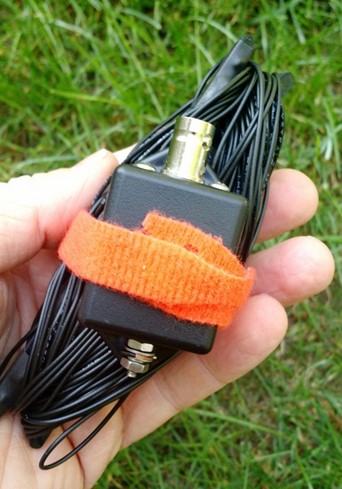
Par EndFedz® Lightweight, Trail-Friendly EFT Antenna
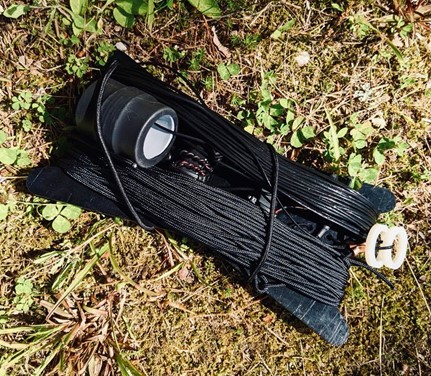
Chameleon LEFS-8010 Lightweight End-Fed Half-Wave Sloper Antenna
Dipoles
Dipoles are some of the easiest antennas to construct and also some of the most reliable and efficient.
Many operators will build or purchase a field dipole antenna cut for their favorite bands, such as 40, 30, 20, or 17 meters. If trimmed properly, they are bulletproof in terms of providing a low SWR and effective radiating pattern on one band.
If a dipole is deployed horizontally to the ground, it will require a minimum of two suspension points to hold up each half of the antenna. This can be difficult to set up in the field, or at least it can pose limits to where you can set up. For example, you may need to find two nearby trees spaced a certain distance apart in which to suspend it. Dipoles also like to be high off the ground; this is not always practical or readily achieved.
That said, most field ops who use dipoles configure them as an inverted “V” with one suspension point holding up the center of the antenna. Inverted Vs are much easier to deploy and, overall, provide several elements likely to result in a successful field activation.
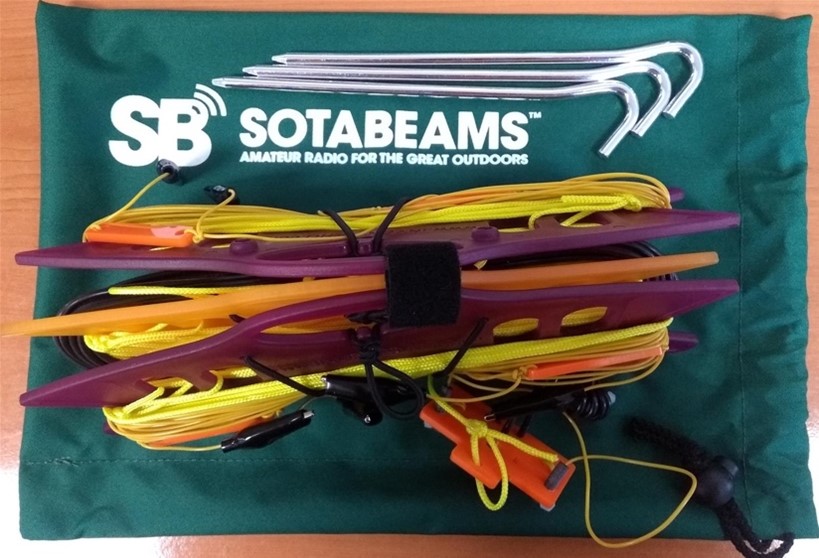
SOTAbeams Dipole
Compact Magnetic Loop Antennas
In the past two decades, magnetic loop antennas have become incredibly popular, no doubt because they are so effective at mitigating the ever-present QRM (manmade radio interference) that so often surrounds our homes these days.
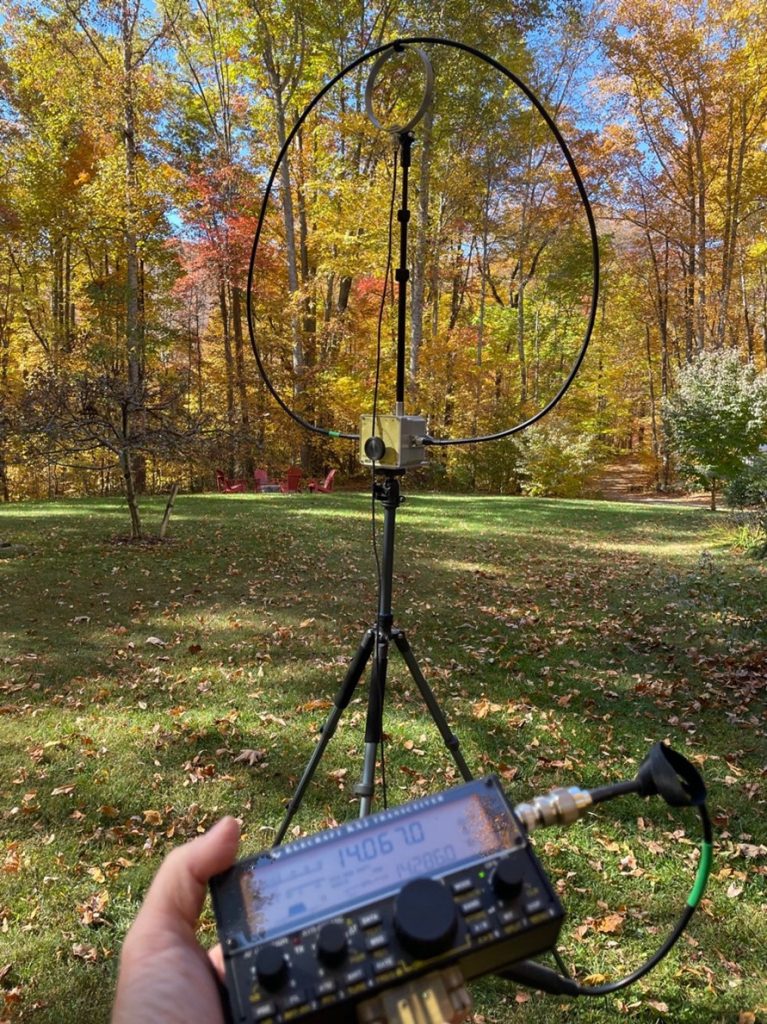
Compact Magnetic Loop Antenna
Field operators like mag loops because they are compact, self-supporting, and easily mounted on a typical camera tripod. They’re ideal for portable operators who simply have no interest in deploying an antenna in a tree or on a telescoping mast. One of my ham radio friends who is visually impaired especially appreciates the fact that he can deploy a mag loop antenna without help from others.
I find that mag loops are very effective and efficient antennas on 20 meters and higher. While mag loops can be designed to work on the lower bands, their aperture is typically too small to be efficient. That said, they’ll still help you activate a park or summit on those lower bands.
The main difficulty with mag loop antennas is that they have a very narrow operating bandwidth (or high “Q”). This means that you must re-tune the loop when you change frequency, even if you adjust it only a few kHz. For this reason, loops are not ideal in situations where you need to hunt and pounce on stations. In the case of activating a park, summit, or island, the operator typically locates a free frequency and calls CQ in that one location. Some loops also have remote tuning, which is helpful.
In addition, loops can be easily affected by nearby metallic objects or even the operator.
While mag loops are actually quite easy to build if you have a decent variable capacitor, most field operators will purchase one of the robust and time-tested portable models like the Chameleon CHA F-Loop 3.0 or the Alex Loop, to name just a couple.
Verticals
There are so many vertical antenna options out there, it would be easy to write a series of articles on them alone. To keep things simple, I’ll limit myself to portable field-deployable telescopic (or extending) vertical antennas.
As with wire antennas, some vertical antennas are essentially resonant, while others are non-resonant.
Portable verticals are typically mono-band unless they are built with a tappable or automatic tuning coil. Some multi-band portable verticals have an open coil with either tap points or a manually sliding tap that allows for band changes. There are also a number of verticals designed for mobile use that have an automatic tuning mechanism which makes changing bands effortless.
Verticals are very popular with summit activators because they’re so easy to set up, don’t rely on trees for support, and are relatively compact on the higher bands typically used in SOTA.
Verticals are also a very effective antenna for DX if located on the coast near salt water. Where I live in the mountains of North Carolina, we have poor ground conductivity, so (in theory) verticals aren’t as effective here as they would be on the shores of the Atlantic Ocean. That said, I routinely use a wide variety of verticals in my field activities, and they’ve never posed an issue; indeed, I’ve also worked some amazing DX with them.
Sample resonant verticals:
Super-Compact and Compromised Antennas
There are also super-compact electrically shortened antennas that are very appealing because of their size, stealthiness, and low impact. They are a compromise, though: if you’re operating five watts SSB into a five-foot whip on 20 meters, you can’t expect the performance you would get from a 20-meter dipole.
These compromised antennas can have a rather high Q–much like a mag loop–and thus a narrow bandwidth. Although many of these antennas are designed to be resonant or near-resonant, you might still need a matching unit or ATU to achieve an ideal SWR.
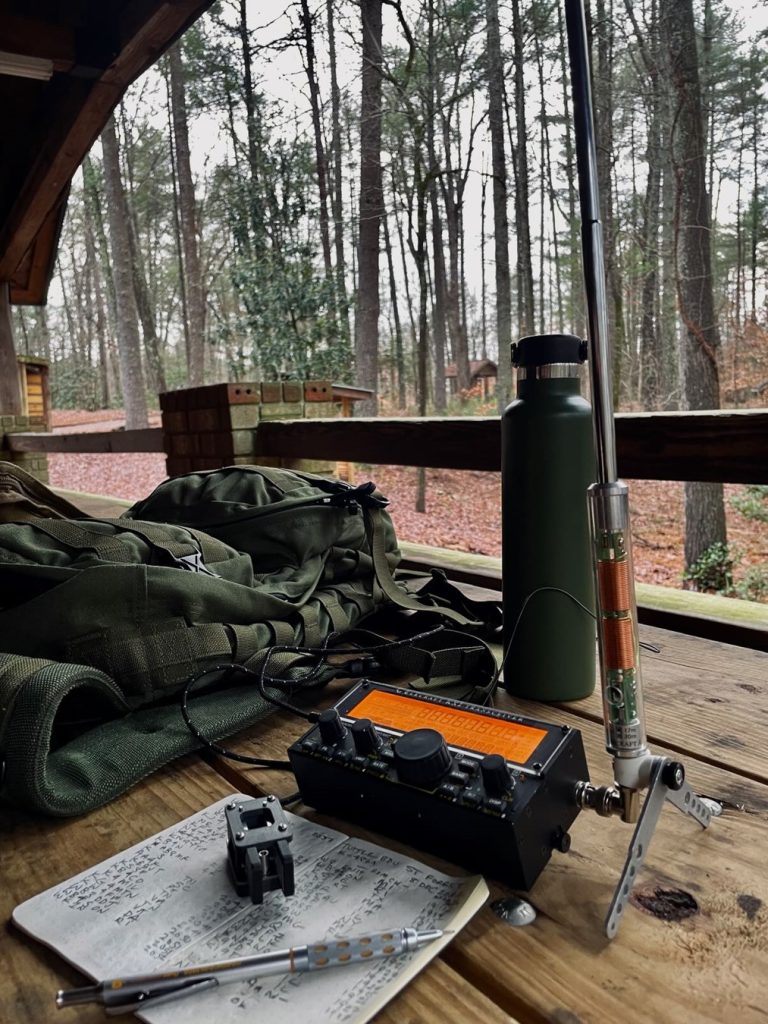
Super-Compact Antenna
Sometimes the antenna’s compact form is worth the compromise, especially as portable operating is allowed in venues where erecting a wire antenna is simply neither practical nor advisable.
Since, as an activator, I’m the DX, I find that I have no real issues using a truly compromised antenna. No doubt, it helps that I’m typically operating in the eastern half of the U.S. and within an easy footprint of many hunters and chasers. If you’re in a more remote location–say Alaska, Hawaii, or western Australia–you may have limited success with pocket-sized antennas.
That said, compact antennas have saved many activations for me, especially those in busy urban parks where larger, more conspicuous antennas might not be welcome.
Sample compact antennas:
Next Up: Non-Resonant Antennas
Resonant wire antennas are considered to be some of the most effective and efficient antennas for field use. Still, sometimes a multi-band non-resonant antenna may be the best choice. Why? That’s exactly what we’ll discuss in Part Two of our series on choosing an HF field antenna!

